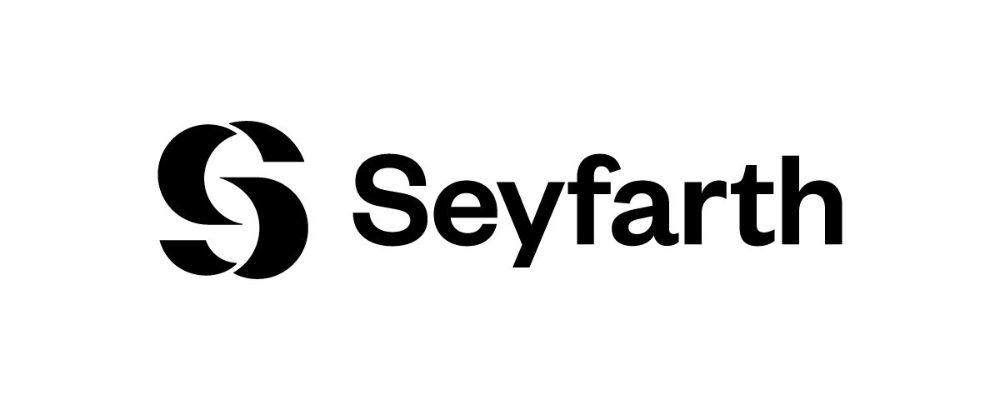Seyfarth Synopsis: PAGA reform has officially been introduced in the state Assembly and Senate! The language of the bills were released detailing the most substantive changes to PAGA in its 20-year history. The bills have numerous provisions that benefit California employers, including imposing more restrictive standing requirements for plaintiffs, codifying the need for manageability of PAGA claims, and reforming the penalty structure, along with several other changes detailed below.
On the evening of June 21, 2024, Assembly Bill 2288 and Senate Bill 92 were introduced, collectively proposing significant reforms to the Labor Code Private Attorneys General Act of 2004. We look at each of the key changes below:
Standing Required
- Personal Experience: Plaintiffs will now need to personally experience the Labor Code violation(s) they are seeking to recover on a representative basis. Following the decision in Huff v. Securitas Security USA Services, Inc., employee-plaintiffs could pursue penalties affecting other employees, even if not personally affected by the violations affecting other employees—the plaintiff just needed to prove a single Labor Code violation to sue on any other Labor Code violation. This meant that plaintiffs had a very low burden in order to essentially unlock a wholesale audit of an employer’s wage and hour practices having nothing to do with them personally. But, under the new bill, plaintiffs must prove that they experienced the same Labor Code violations they seek to pursue on behalf of other employees.
- Note: PAGA actions brought by nonprofit legal aid associations that have been involved in PAGA litigation for at least 5 years are exempt from this new provision. Accordingly, the Huff concept of standing in PAGA actions will remain in actions brought by nonprofits.
- Statute of Limitations: Since Johnson v. Maxim Healthcare Services, Inc., plaintiffs have argued that there is no time limit on when they could have experienced a Labor Code violation in order to bring a PAGA claim. AB 2288 makes clear that the PAGA statute of limitations applies to the personal Labor Code violation that a plaintiff must experience—one year—to have standing to bring the PAGA action.
These provisions will go a long way in limiting the scope of broad PAGA actions from the outset. Employers can argue that the plaintiff’s claims should be adjudicated first in order to determine the appropriate scope of the claims for the representative group. It also makes the arbitrations of individual PAGA claims more important, as the results of arbitration will define the scope of the potential representative action once the representative PAGA action proceeds in Superior Court.
Manageability Officially Set
One of the more recent battles in PAGA litigation has been manageability (or lack thereof) of PAGA claims. This culminated with the California Supreme Court’s decision in Estrada v. Royalty Carpet Mills, Inc., which held that trial courts do not have the inherent authority to strike a PAGA claim on manageability grounds, but a trial court can, and should, use its full tool box of case management procedures to ensure that a PAGA claim is effectively and manageably tried.
AB 2288 explicitly enforces the courts’ power to determine manageability over PAGA claims, and provides that it may limit the evidence to be presented at trial or otherwise limit the scope of any claim filed to ensure that the claim can be effectively tried.
Changes To Structure Of Civil Penalties
AB 2288 makes several changes to the structure of penalties available under PAGA. As a reminder, under current Labor Code section 2699, employers may be subject to a civil penalty of $100 for each aggrieved employee per pay period for an initial violation, and $200 for each subsequent violation. The new penalty structure is more complex:
- 15% Cap on Penalties For Employers Who Take Reasonable Steps For Compliance: If an employer demonstrates that it “has taken all reasonable steps to be in compliance” with the law prior to receipt of a PAGA notice or a request for personnel records, then the available penalties are capped at 15% of the penalties sought.
- Examples of such reasonable steps include, but are explicitly not limited to, conducting periodic payroll audits, and taking action in response to the results of the audit, disseminating lawful written policies, training supervisors on applicable Labor Code and wage order compliance, or taking appropriate corrective action with regard to supervisors as needed.
- Whether the 15% cap is applied will be left to the discretion of the court as to whether the employer took reasonable steps to achieve compliance.
- 30% Cap on Penalties For Employers Who Take Steps For Compliance After Receipt Of PAGA Notice: The bill provides that if an employer “has taken all reasonable steps to prospectively be in compliance with all provisions identified in the notice,” then the available penalties are capped at 30%. Like the application of the 15% cap, this is a test to be applied by the Court considering the totality of the circumstances.
- Cap On Penalties For Wage Statement Violations That Do Not Cause Injury: Huge penalties for innocuous wage statement violations was a posterchild for the PAGA ballot initiative. The bill provides that if a wage statement violation under Labor Code § 226 does not cause harm to the plaintiff, then the available penalty is capped at $25. Additionally, the bill confirms that penalties for Labor Code § 226 violations are the only penalties available for wage statement violations, foreclosing arguments by plaintiffs that they can double-dip on wage statement claims and seek penalties under Labor Code § 226.3 as well.
- Limitations On When $200 Penalty Available: Since PAGA’s inception, there had been plenty of disagreement as to when the $200 penalty for a “subsequent violation” could be awarded. Now, the bill sets forth two circumstances in which that higher penalty may be considered:
- A $200 penalty for a subsequent violation is available if there has been a court or agency determination within the last five years that the employer had an unlawful policy or practice that caused the violation; or
- If a court determines that the employer’s conduct which caused the violation was malicious, fraudulent, or oppressive. (This is the same standard for imposition of punitive damages in California.)
- Ultimately, the bill does not create any increased or higher penalties under PAGA than which previously existed. And, the threshold to attain the higher $200 penalty is more precisely defined and ultimately harder for plaintiffs to attain.
- No Derivative Penalties: Another cause of the large possible exposure to employers under PAGA was the penalties for derivative Labor Code violations—meaning plaintiffs would seek a penalty for underpayment of wages, and also penalties for derivative violations of other Labor Code provisions such as § 203 (failure to pay the underpayment at time of termination), § 204 (failure to pay the underpayment in the pay period it was earned), § 226 (failure to list the underpayment on the wage statement for the pay period), etc. As a result, a single violation could result in numerous penalties. The bill makes clear that penalties cannot be awarded for derivative claims.
- Cap On Penalties For Isolated Errors: Where violations occur for less than 30 days, or four consecutive pay periods, the maximum penalty available is $50.
- Court’s Discretion To Assess Penalties Is Codified: It has long been accepted that the Court has discretion, based on the facts and circumstances of the case, to reduce the penalties to be imposed on employers to avoid an award that is unfair under the circumstances. The Court’s discretion to adjust the amount of penalties awarded based on the circumstances of the case has been codified in the bill.
- Employers With Weekly Pay Periods Get Relief: PAGA imposes penalties on a pay period basis. This meant that if an employer operated on a weekly pay period, they were exposed to twice as many potential penalties than if they operated on a biweekly pay period. The bill addresses this unfairness and provides that any penalty amount for an employer operating on a weekly pay period is reduced by half.
- Employees Receive Greater Portion of Penalties Awarded: Previously, any award under PAGA was distributed 75% to the Labor & Workforce Development Agency and 25% to the affected employees. The bill increases the employees’ share of penalties to 35%.
New Cure Provisions
PAGA previously had an extremely limited “cure” provision which allowed employers to cure or fix the alleged Labor Code violations included in a plaintiff’s PAGA notice. This mechanism was seldom used by employers, as any attempt to cure was typically ignored by plaintiffs, and the PAGA claims would still proceed in Court. The new proposed bill overhauls PAGA’s cure provision, allowing more violations to be cured, and introducing new mechanisms that employers can take advantage of to capitalize on curing violations.
- What Can Be Cured? AB 2288 now allows violations of Labor Code § 226 (wage statements – previously, only certain parts of wage statement violations could be cured), § 226.7 (failure to pay meal/rest period premiums), § 510 (overtime), and § 2802 (expense reimbursement) to be cured. This expansion includes some of the most frequently alleged violations under PAGA.
- Options for Small Employers Wanting To Cure: Small employers (defined as under 100 employees during the relevant period), can notify the LWDA that they would like to cure the alleged violations. The agency will then arrange a settlement conference with the plaintiff and employer in an attempt to reach an early resolution for the matter, like the conferences held by the Labor Commissioner for individual wage claims.
- Options for Large Employers Wanting To Cure: Employers with more than 100 employees may file a request for a stay and Early Neutral Evaluation with the court, which requires the court stay all discovery and responsive pleading deadlines. The neutral will then review the employer’s plan for curing violations, monitor compliance with the plan for a cure, and consider the employer’s efforts in limiting potential penalties. An employer may also file a motion for the court to approve a cure, even if the plaintiffs or neutral do not agree a cure has been sufficient.
While it remains to be seen how the courts will handle these new requests for Early Neutral Evaluations, it will likely put an onus on plaintiffs to provide more than boilerplate allegations in their PAGA notices. Employers should be given sufficient notice to be afforded the opportunity to cure and the Early Neutral Evaluations (and their associated stays) will provide an early opportunity for employers to highlight any vague or conclusory allegations in plaintiff’s PAGA notices, and force unreasonable plaintiffs to an early bargaining table.
Injunctive Relief Is Now A Potential Remedy
Previously, the only available remedies under PAGA were civil penalties and attorneys’ fees. AB 2288 adds injunctive relief as an available remedy. This permits PAGA plaintiffs to seek injunctive relief in any circumstances where the LWDA could seek injunctive relief.
The legislation specifies that regardless of when it is signed into law by Governor Newsom, it is effective as of June 19, 2024, and applies to any proceedings initiated on or after that date.
Workplace Solutions
Stay tuned as your favorite Seyfarth attorneys monitor the fate of this groundbreaking legislation. We will continue to update you as amendments happen or if the bills are passed.
Edited by Coby Turner
“With approximately 900 lawyers across 17 offices, Seyfarth Shaw LLP provides advisory, litigation, and transactional legal services to clients worldwide.”
Please visit the firm link to site






